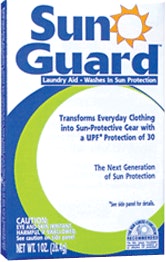Just because summer is winding down doesn’t mean you get to lay off the sunscreen. Truck drivers are in the sun every day it shines, and skin cancer is very common in the industry. A general understanding of what to look for and how to prevent it is your best defense in fighting the disease.
Skin cancers, like basal cell, squamous cell and melanoma, start out their treacherous lives as precancerous lesions. These lesions are not exactly cancer but could become cancer over time. Experts tell us that 40-50 percent of all fair-skinned people who live to 65 will develop at least one skin cancer during this time, meaning one in five Americans will develop skin cancer during their lifetime. Scarier still, skin cancer is the second most common cancer in women between the ages of 20 and 29. Fifty to eighty percent of the skin damage that causes wrinkles, skin pigmentation, sun spots and even cancer occurs before a person reaches the age of 18.
Those brown spots that tend to crop up with age have little to do with the passing years, and much more to do with soaking up rays. Age spots are the result of cumulative sun exposure and subsequent damage. They appear because pigment cells have accumulated in the top layer of skin. Abnormal cell accumulation is a precursor and warning sign for cancer. Experts at the Mayo Clinic in Rochester, Minn., tell us that Actinic Keratosis (Solar Keratosis) commonly grows on the head, neck or hands. These patches usually appear on people over the age of 40, but they are seen in people a lot younger as well. Early treatment can stop the progression of these patches to squamous-cell skin cancer.
Malignant melanoma, especially in the later stages of the disease, is a serious matter and treatment can be difficult. Early diagnosis and treatment can increase chances of survival. Regular check-ups and good sun protection are the first line of defense.
 The latest trend in sunscreen is something you throw in with the laundry. While clothing provides a barrier between the sun’s harmful rays and your skin, lightweight cotton, for instance, doesn’t give more than SPF 5 protection. A new product called SunGuard, endorsed by the Skin Cancer Foundation, can simply be added to your washing machine load along with detergent to add an extra level of sun protection to your clothes — the coating is said to keep more than 96 percent of the sun’s rays from permeating the fabric.
The latest trend in sunscreen is something you throw in with the laundry. While clothing provides a barrier between the sun’s harmful rays and your skin, lightweight cotton, for instance, doesn’t give more than SPF 5 protection. A new product called SunGuard, endorsed by the Skin Cancer Foundation, can simply be added to your washing machine load along with detergent to add an extra level of sun protection to your clothes — the coating is said to keep more than 96 percent of the sun’s rays from permeating the fabric.Sunscreen should be applied liberally. Most people apply only 25-50 percent of the recommended amount of sunscreen. About one ounce of sunscreen, enough to fill a shot glass, is considered to be the amount needed to cover the exposed areas of the body properly. If your face is the only real exposed area of your body, especially during the winter months, apply a teaspoon of sunscreen—at least SPF 30—for your face and neck alone.
If you’re on the lookout for dark moles to screen for skin cancer, you’re on the right track. Malignant spots aren’t always so easy to find. “Follow the Sesame Street rule — ‘One of these things is not like the other,’” says Barbara Reed, MD, a dermatologist at the Denver Skin Clinic. “Melanomas can be red, purple, flesh-colored or even white. I think I’ve seen them in every color except green.”
Knowing Your ABCDE’s can help save your life. Moles and freckles are usually nothing to worry about, but it’s important to keep an eye on these items in case they change. The best way to evaluate your moles and freckles is to know your ABCDE’s.
Asymmetry is when a mole or freckle becomes lopsided.
Ragged Borders can spell trouble.
Color should be uniform and unchanging.
When the Diameter of a mole or freckle becomes larger than the eraser of a pencil, you may want to schedule a check-up with your doctor.
When moles and freckles become raised or Elevated, you will need to follow up with your doctor.











